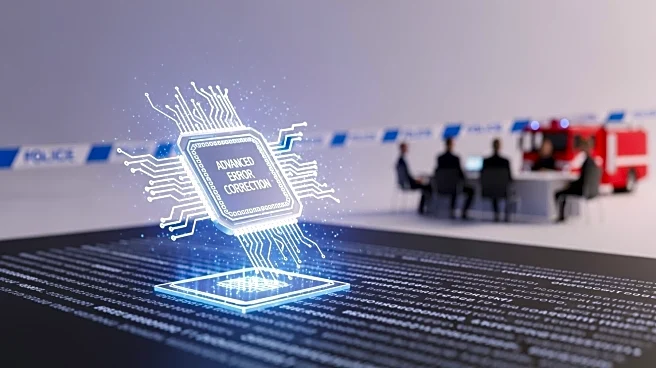What's Happening?
Recent advancements in quantum computing have been made with the development of superconducting nanowires integrated onto waveguides, achieving near-perfect single-photon detection efficiency. This breakthrough is crucial for quantum computing applications,
as it minimizes detection delay and benefits feedforward error correction in universal photonic computing architectures. The superconducting nanowires are designed in a hairpin structure, which is optimized for high-performance detection efficiency. The integration process involves precise fabrication techniques, including etching and membrane formation, to ensure structural and electrical integrity.
Why It's Important?
The achievement of near-perfect detection efficiency is a significant milestone in the field of quantum computing, as it addresses one of the major challenges in developing reliable quantum systems. High detection efficiency is essential for accurate quantum error correction, which is necessary for the practical implementation of quantum computing. This development could lead to more efficient quantum computers, capable of solving complex problems faster than classical computers. The integration of superconducting nanowires onto waveguides also opens up possibilities for more compact and scalable quantum computing architectures.
What's Next?
The next steps involve further optimization of the fabrication process to enhance the performance and scalability of the superconducting nanowire detectors. Researchers will continue to explore ways to reduce minor loss factors and improve the overall efficiency of the quantum computing systems. Additionally, the integration of these detectors into larger quantum computing architectures will be pursued, with the aim of developing practical, large-scale quantum computers.
Beyond the Headlines
The development of superconducting nanowires for quantum computing also has implications for other fields, such as telecommunications and cryptography, where secure and efficient data transmission is crucial. The ability to detect single photons with high efficiency could lead to advancements in quantum communication technologies, providing more secure methods of data exchange.













